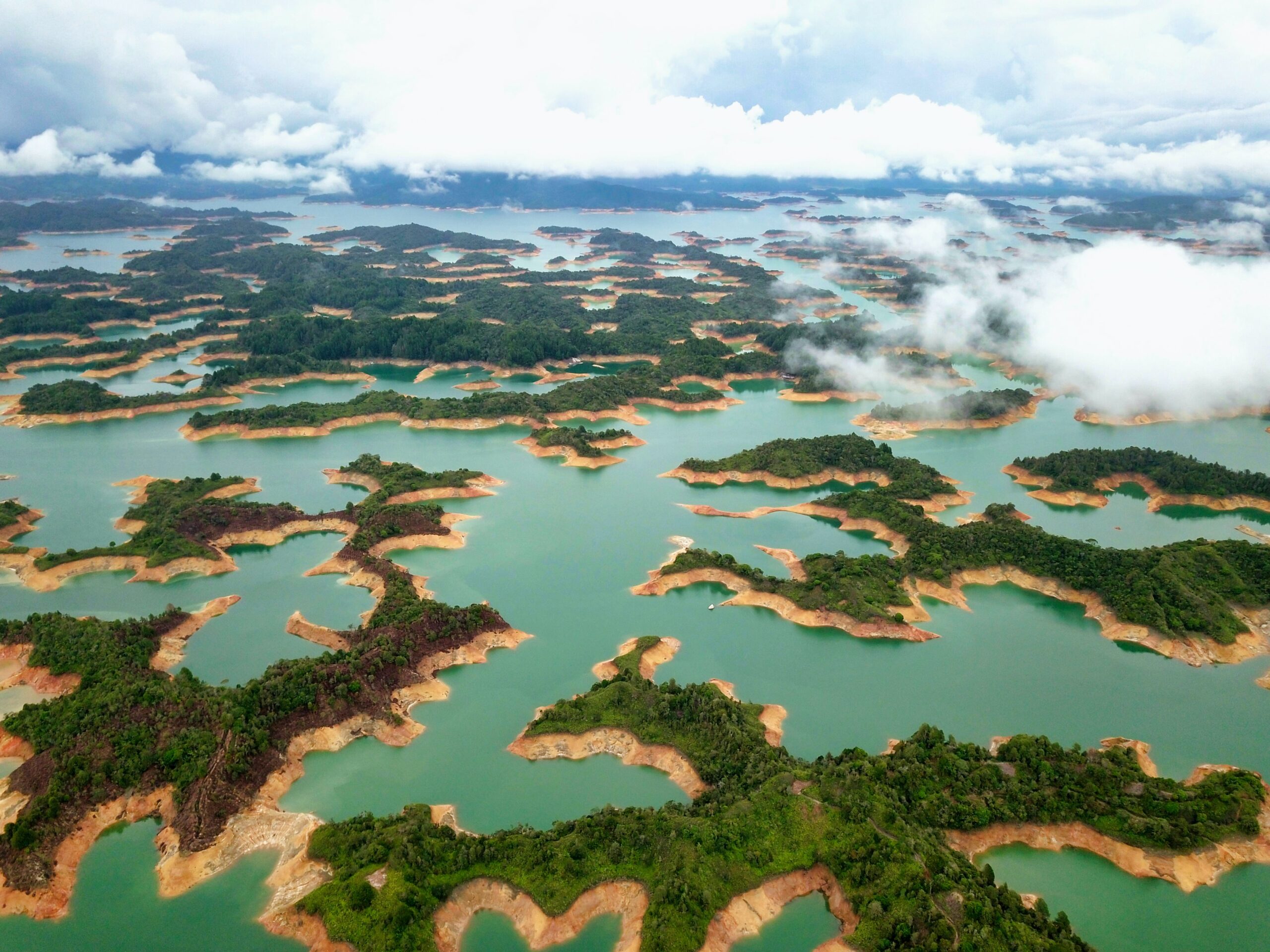The organization/ department in brief
The Alliance for Water Stewardship (AWS) is a global membership collaboration comprising businesses, Non-Governmental Organizations and the public sector. Its members contribute to the sustainability of local water-resources through their adoption and promotion of a universal framework – the Alliance for Water Stewardship Standard – for the sustainable use of water that drives, recognizes and rewards good water stewardship performance.
The Alliance for Water Stewardship Standard assists major water users to understand their water use and impacts, and to work collaboratively and transparently for sustainable water management within a catchment context. Sites are engaged with to understand and address shared catchment water challenges as well as site water risks and opportunities. It asks these sites to address its challenges in a way that progressively moves them to best practice in terms of four outcomes:
1. Sustainable water balance;
2. Good water quality;
3. Healthy important water-related areas (sites and values); and
4. Good water governance.
IDEEA Group are experts in the practical application of environmental economic accounting.
Why was this undertaken?
The project was undertaken to explore how the practical application of the System of Environmental-Economic Accounting (SEEA) can support the monitoring and evaluation phases of the Alliance for Water Stewardship Standard.
What was the scope?
In 2017, the Alliance for Water Stewardship commenced a project supported by the IDEEA Group to highlight the conceptual linkages between the Alliance for Water Stewardship (AWS) and the System of Environmental-Economic Accounting (SEEA). It was recognised that while the System of Environmental-Economic Accounting (SEEA) can play an important role in all six steps of the Alliance for Water Stewardship Standard its effectiveness is most prominent in the measurement and evaluation steps.
Phase 2 of the project, commencing in June 2018, built on previous work to investigate the practical aspects of integrating the Alliance for Water Stewardship Standard and the System of Environmental-Economic Accounting. The focus of the study, which included a desktop study and a mission to China, was to explore the practical elements of applying environmental-economic accounting to measure and record the dependencies between Chinese industrial parks and water assets at the catchment scale.
The Kunshan Economic-Technological Development Zone and the Tianjin Economic-Technological Development Area – industrial parks in the process of developing water stewardship standards – were used as case studies to compare the practical application of environmental-economic accounting.
China’s Industrial Parks are key drivers of growth in China’s national and regional economies. Together, the industrial parks, of which there were 219 in 2016, accounted for 4.3% of national industrial water use. The industrial parks attach great importance to water related issues and their experience and achievements in water reservation, recycling and integrated utilisation are paradigms for other areas in China.
Prior to the mission to China, a conceptual framework describing the relationship between industrial parks, source water assets and sink water assets, was developed. The framework was the core model used to understand abstraction and discharge in the Kunshan and Tianjin industrial parks and can be directly linked to the first three Alliance for Water Stewardship outcomes.
The relevance of the conceptual framework was explored during stakeholder consultation. Stakeholders were asked to explain the context related to the use of water in each of the catchments in Kunshan and Tianjin, including key water issues and the policy drivers affecting economic actors. Stakeholders were also asked to describe the data they hold on water and whether it aligns with the conceptual framework.
Given the combination of private and public values that water assets provide, catchment level water related issues require coordination between the public and private sector. The policy environment, set by the public sector, affects the private sector and how they interact with environmental resources such as water.
There is potential for the environmental-economic accounts to be used across many purposes that link the public and private sector. This might include, for example, participation in environmental markets and reporting to government objectives on sustainability. The project utilised knowledge on public and private sector data to begin to populate the accounting framework.
What were the results?
The project found that the principles of environmental-economic accounting are suitable for compiling information for the conceptual framework at a catchment level (and any geographic context for that matter). Integration of the principles contained in the System of Environmental-Economic Accounting-Central Framework and the System of Environmental-Economic Accounting- Experimental Ecosystem Accounting completely cover the conceptual framework.
Beyond the Alliance for Water Stewardship Standard measurement and evaluation, the benefits of integrating the accounting system into existing private sector and public sector systems was also evident. Businesses that adopt the System of Environmental-Economic Accounting as a tool to support their Alliance for Water Stewardship Standard Certification will be able to integrate information on environmental stocks and flows into day-to-day management practices.
By integrating environmental-economic accounting into existing business systems, outcome 4 of the Alliance for Water Stewardship Standard, good water governance, can also be achieved. Industrial parks can improve performance with respect to water governance by reporting on dependencies and engaging transparently with stakeholders, something that will be supported by an integrated accounting system. Further, the accounts can be used to underpin legislative reporting as they facilitate the provision of consistent standardised reporting by both government agencies and private firms.
Environmental-economic accounting also supports measurement of macroeconomic environmentally adjusted indicators such as Green Gross Domestic Product, Gross Ecosystem Product and National resource balance sheets. In addition to supporting the national mandate on ecological civilisation, policies that would benefit from the environmental-economic accounts include the Water Pollution Prevention and Control Action Plan (known as the Water Ten Plan), Environmental Protection Law, Water Resource Tax Expansion, River Chief System and Ecological Red Lines Policy.
With both the public and private sector engaged in environmental-economic accounting, firms can engage more effectively in environmental markets. The alignment of data, classifications and accounting methods across public and private institutions will help market participants capitalise on opportunities such as payments for ecosystem services. The investments made in the environment will be recognised as investments in assets that are providing a service to the business that have monetary significance.
Relating to the practical application of the System of Environmental-Economic Accounting, the project found that Tianjin and Kunshan would be appropriate regions to pilot the System of Environmental-Economic Accounting – Central Framework and the System of Environmental-Economic Accounting -Experimental Ecosystem Accounts respectively. Discussions with the Tianjin Economic-Technological Development Area (TEDA) Eco-Centre indicated that their circular economy model and data could be used as the foundation for the development of System of Environmental-Economic Accounting – Central Framework supply and use tables. Data has been collected on several topics such as the supply of water by companies, volumes of abstracted water and volumes of waste water.
Discussions with Kunshan stakeholders highlighted interest in ecosystem accounting from the perspective of nature-based solutions that remedy poor water quality. Data in Kunshan Economic-Technological Development Zone mainly relates to that required for ecosystem accounting and is local in nature. There is the potential to leverage data sets held by both Kunshan and Tianjin and developing a set of accounts suitable for both industrial parks.
What were the lessons learned?
While the project found that accounting is feasible in both Tianjin and Kushan, data availability is a potential constraint. Rather than see this as a barrier to account production, it should be an opportunity to improve data collection and continue with account production.
One key issue regarding ecosystem accounts is that the integration of physical data on water at relevant spatial levels (e.g., river basins), may not align with the available spatial detail for economic data (which are more commonly compiled based on administrative boundaries). As part of a data scoping exercise it will be necessary to understand the spatial attributes of each data set collected to avoid wasting resources.
To build the capacity required for natural capital accounting it is necessary to invest in the appropriate people and technology. Skills in economics, accounting, ecology and Geographical Information Systems (GIS) will be required, as will be the technology to undertake the accounting, such as GIS software, modelling software and database management systems.
Institutional relationships are central to environmental economic accounting and institutional coordination can help reduce barriers to good environmental management. For example, data collection will be easier if there are strong relationships between the data custodian (ministries or provincial government) and the Alliance for Water Stewardship, and expenditure on capacity building will be of greater value if Alliance for Water Stewardship and government methods are aligned.
Next steps
Take steps to build capacity related to environmental-economic accounting across different levels and across sectors in China.
With respect to piloting environmental-economic accounting in industrial parks, two bodies of work can be completed concurrently. A contextual report – explaining the water issues, assets and industrial park in detail – and a detailed data scoping report and gathering exercise
Quote
“Communicating the impacts of Alliance for Water Stewardship certification to public sector agencies, green investors and philanthropists in a credible and easily understood form has the potential to generate benefits to implementers that will enhance the business case for water stewardship”.
Other comments
The full report is available here













